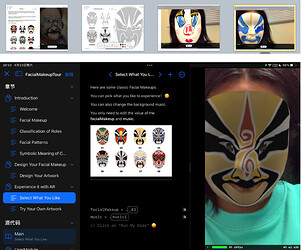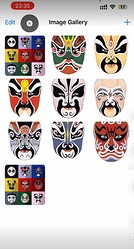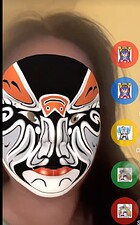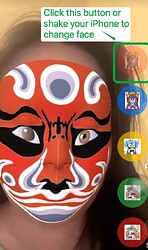Using AR to introduce Facial Makeup in Chinese Opera, you can color provided templates, design your own MagicMask, and finally experience your artwork through AR.
Different colored masks represent different personalities. The backend server can analyze personalities based on the MagicMask artwork designed by the user.
Background
At many cultural events like the International Festival at CU, the Chinese booth traditionally showcases the rich heritage of Chinese opera using conventional methods(without emerging tech).
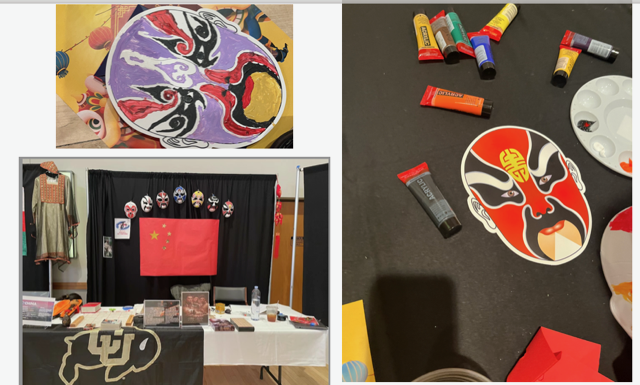
However, the MagicMask experience revolutionizes this presentation by employing real-time Augmented Reality (AR), large language models (LLMs), and digital illustration supported by the iPad and Apple Pencil.
Experience Flow:
-
The session begins with a brief introduction to the Chinese Opera arts, supplemented by MacBookPro displays or printed A4 posters that introduce cultural context.
-
Participants can engage with 20 physical uncolored masks, encouraging them to try traditional face mask painting.
-
An iPad equipped with a front-facing camera instantly renders the AR-supported MagicMask effect on the user’s face as they appear in view.
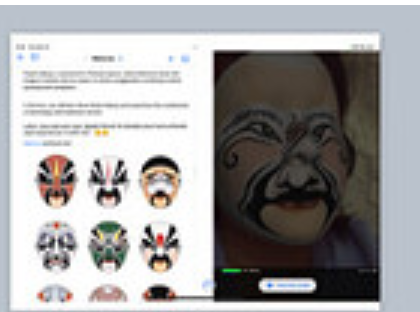
-
Users can color in their masks using the Apple Pencil and obtain their personalized MagicMask via AirDrop or email.

-
A QR code allows users to download an app or use my demo devices to enhance their experience.
-
Visitors’ drawing are uploaded, user try their own drawing with AR and an AI-powered backend generates a “personality analysis” based on the colors used in their facial makeup.
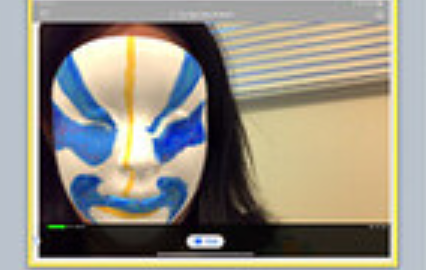
- users shake their phones to perform a “face-switching magic trick”
Significance:
I believe that specific art forms, like Chinese opera and facial makeup, are merely mediums. Any country’s intangible cultural heritage, when combined with emerging technologies, could be redesigned into a more suitable and engaging interactive process for festival booths.
One can vividly perceive the limitations of physical mask coloring—it cannot reflect changes in expression, seamlessly switch between different masks, or provide instant personality analysis.
Setting up a traditional booth without technology involves substantial effort: creating or purchasing mask materials, preparing paints and brushes, and dealing with potential messes that require cleanup.
However, by integrating technology, everything is simplified to just a QR code.
At international festivals, various cultures from around the world could be showcased more engagingly through innovative technologies. However, for various reasons, such as the lack of familiarity with emerging technologies within departments dedicated to sharing intangible cultural heritage at organizations like the United Nations, it becomes challenging to design cultural experiences that leverage new technological advancements.
iPad version:
iOS app:
If you want to install it at your Apple device, please contact magicmask@amberwu.us to get instructions for test version.
